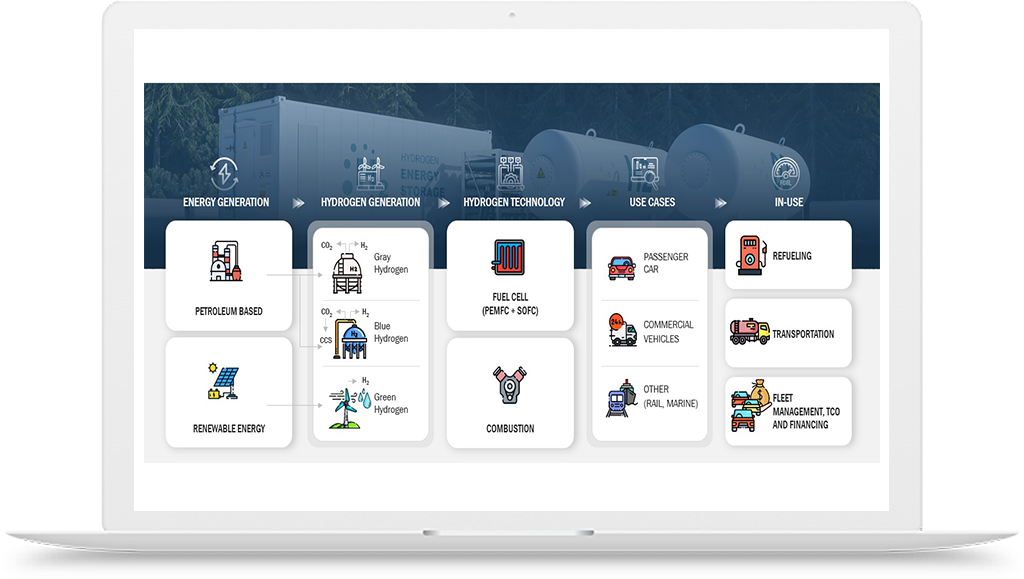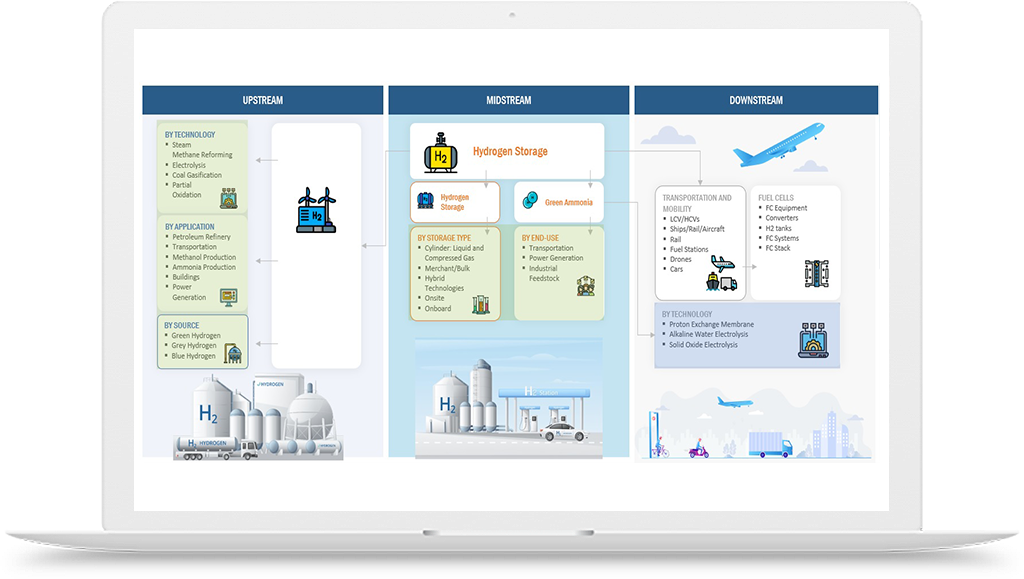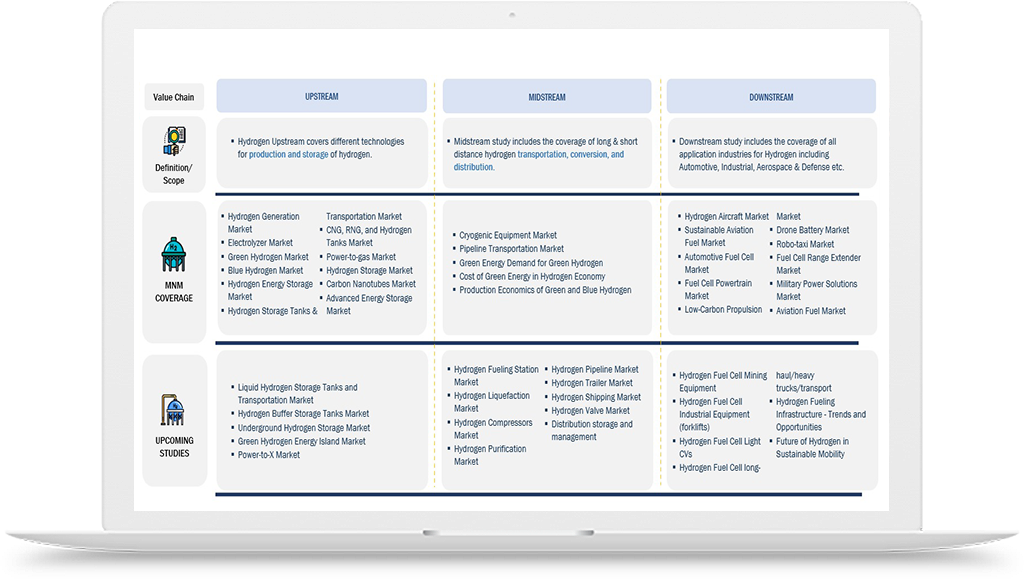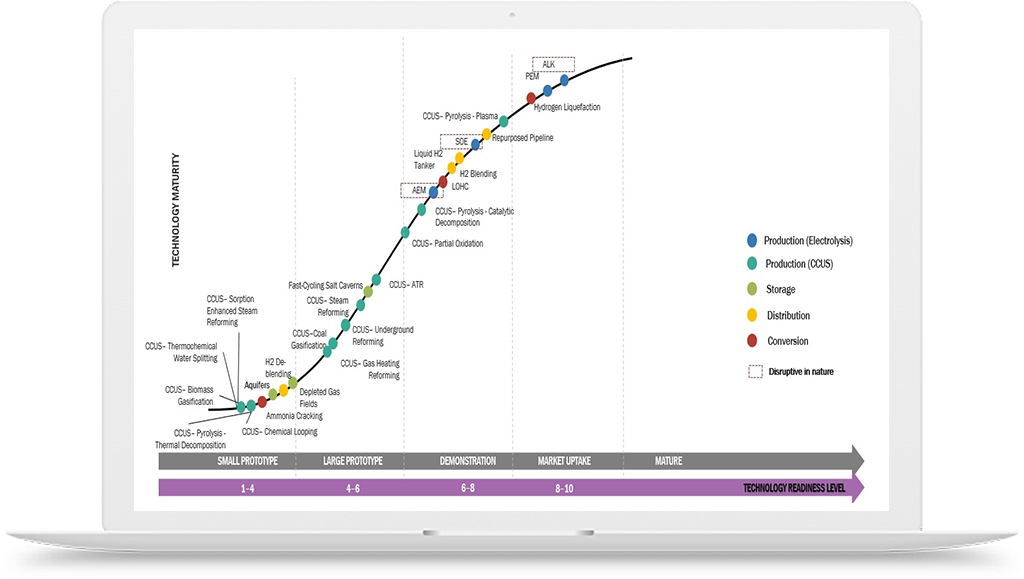Hydrogen for Net Zero Emission
Hydrogen for Achieving Net Zero Emission Goals
Hydrogen can be used in a number of important ways and applications to help achieve the larger goal of reaching net zero emissions targets. Here are a few ideas for integrating hydrogen:
-
Clean Power Generation:
Green Hydrogen Production: Use renewable electricity to electrolyze hydrogen, making sure that the process produces as little carbon dioxide as possible. Then, by substituting this green hydrogen for fossil fuels in the production of electricity, emissions from the electrical industry can be decreased.
Carbon Neutrality: By generating hydrogen without the use of fossil fuels, green hydrogen production ensures carbon neutrality. Thus, from generation to use, the whole lifecycle of green hydrogen adds very little to atmospheric carbon dioxide concentrations.
Clean Power Generation: Conventional fossil fuel-based electricity sources can be replaced by using green hydrogen as a clean fuel. The aim of attaining net-zero emissions in the power sector is greatly aided by this shift, which results in a sharp decrease in greenhouse gas emissions.
Versatility Across Industries: The uses of green hydrogen as a sustainable fuel have applications not limited to the power sector; these include transportation, heating, and manufacturing.
-
Benefits of Green Hydrogen for Net Zero Emission:
-
Decarbonizing Industry:
Hydrogen for Industrial Processes: Use hydrogen as a substitute for fossil fuels in industrial processes such the production of ammonia, steel, and refining. In hard-to-abate sectors, this can drastically reduce carbon emissions.
Stands as a paramount imperative. Hydrogen takes center stage in realizing net-zero emissions, providing an innovative solution to the challenges of industrial decarbonization. By strategically employing Hydrogen for Net Zero Emission initiatives, industries can seamlessly transition away from carbon-intensive processes. The spotlight is on green hydrogen, meticulously produced through electrolysis with renewable electricity, offering a clean and versatile alternative. Its applications range from serving as a carbon-neutral feedstock for chemical production to delivering clean energy for high-temperature industrial processes. Embracing Hydrogen for Net Zero Emission goals becomes pivotal in reshaping industries, fostering environmental stewardship, and contributing to a cleaner, more sustainable industrial landscape.
-
Zero Emissions Transport:
Hydrogen Fuel Cell Vehicles: Transport networks should incorporate hydrogen fuel cell vehicles, especially for heavy-duty vehicles like buses, railroads, and trucks. Vehicles running on hydrogen produce just water vapor, which helps reduce transportation's emissions.
At the heart of this technology is hydrogen for net zero emissions, where fuel cell vehicles (FCVs) use hydrogen gas to generate power, with the sole result being water vapor emissions. This eco-friendly and sustainable replacement for conventional internal combustion engines highlights how important hydrogen is to achieving net zero emissions in the transportation industry.
Hydrogen Refueling Infrastructure: Establishing a robust hydrogen refueling infrastructure is integral to accelerating the adoption of hydrogen fuel cell vehicles and advancing the cause of Hydrogen for Net Zero Emission. The development of an extensive network ensures convenient access for consumers and promotes the widespread use of clean energy in transportation. Hydrogen for Net Zero Emission gains prominence as this infrastructure enables seamless refueling, overcoming a key barrier to the broader acceptance of hydrogen-powered vehicles. Governments and industries must collaborate to invest in and expand this critical infrastructure, fostering a sustainable ecosystem that propels the transportation sector towards a cleaner and more environmentally conscious future.
-
Energy Storage and Grid Balancing:
Hydrogen as Energy Storage: As a medium for long-term energy storage, use hydrogen. When the availability of renewable energy is limited, excess renewable energy can be electrolyzed to create hydrogen, which can be stored and used to generate electricity again to maintain grid stability and balancing.
Heat and Power Applications:
Hydrogen in Heating Systems:Investigate the application of hydrogen in fuel cells or hydrogen boilers for residential and commercial structures. This can assist in decarbonizing the heating industry, which frequently uses fossil fuels.
-
Hydrogen Export:
Hydrogen as an Exportable Energy Carrier: The establishment of a comprehensive hydrogen strategy comprising infrastructure development, research and development activities, and supportive policies is necessary for the effective integration of hydrogen.
Governments, corporations, and academic institutions must work together to promote innovation, cut costs, and scale up hydrogen technologies for general use. We can achieve net zero emissions targets and build a more sustainable future by integrating hydrogen across several industries.
The potential for using hydrogen as an exportable energy source to promote net-zero emissions and meet global sustainability targets is enormous. Hydrogen presents a versatile alternative for lowering carbon footprints worldwide due to its ability to store and transmit clean energy across national borders. Countries can work together on large-scale production and exporting by utilizing hydrogen for Net Zero Emission projects, establishing worldwide collaborations to fight climate change. In order to achieve net-zero emissions globally, exporting hydrogen as a clean energy carrier acts as a catalyst for reducing emissions on a global scale and building an integrated, sustainable energy landscape.
Few recent examples that highlight the incorporation of hydrogen in achieving net zero emission goals:
-
Green Hydrogen for Power Generation:
Australia's Western Green Energy Hub: In Western Australia, the project intends to build a 50 gigawatt renewable energy hub. The production of green hydrogen will utilise a substantial amount of the electricity produced, aiding in the decarbonization of power generation and helping Australia achieve its net zero emissions targets.
-
Decarbonizing Industry:
Thyssenkrupp and RWE (Germany): Thyssenkrupp, a steel producer, and RWE, an energy provider, are working together on the WESTKÜSTE100 project. By substituting green hydrogen generated from offshore wind energy for fossil fuels in the steel industry, the effort seeks to decarbonize the sector.
-
Zero Emissions Transport:
ZeroAvia (United Kingdom/United States): ZeroAvia is creating hydrogen-electric drivetrain technology for aircraft that emits no emissions. In an effort to offer a sustainable option for commercial flights and lower carbon emissions in the aviation industry, they have successfully tested hydrogen-powered electric aircraft.
-
Energy Storage and Grid Balancing:
EDF Renewables, EIH S.A., and Storengy (France): The goal of the power-to-hydrogen project "H2C," which is being developed by EDF Renewables, EIH S.A., and Storengy (France), is to store excess renewable energy as hydrogen. During times of high demand, the stored hydrogen can be transformed back into electricity, assisting with grid balancing and the integration of renewable energy sources.
Hydrogen Export:
Australia-Singapore Hydrogen Deal: Australia and Singapore have inked a deal for the export of hydrogen made from renewable resources. By producing and exporting green hydrogen from Australia's plentiful renewable energy resources, this cooperation seeks to assist Singapore's sustainable energy transformation.
These illustrations show how hydrogen is being used in real time by a variety of industries to meet net zero emission targets. They highlight hydrogen's potential to contribute to a sustainable and low-carbon future and show the increasing momentum and efforts being made to use it as a major enabler for decarbonization.
















